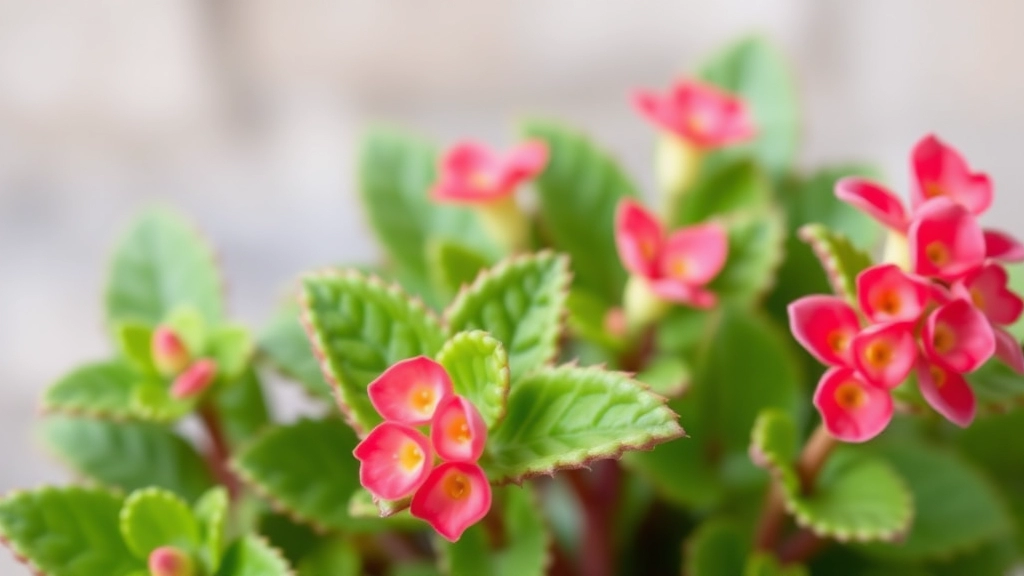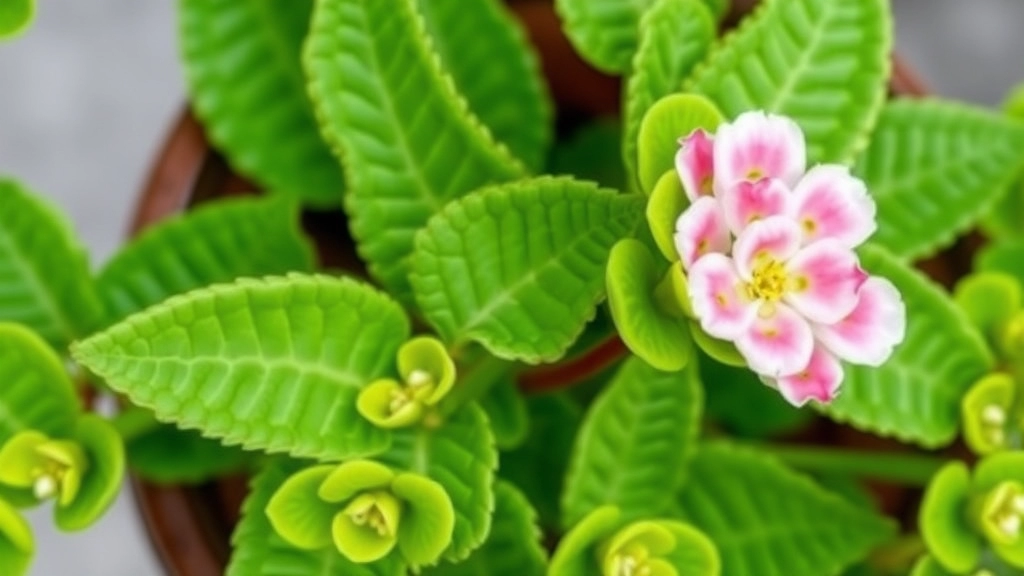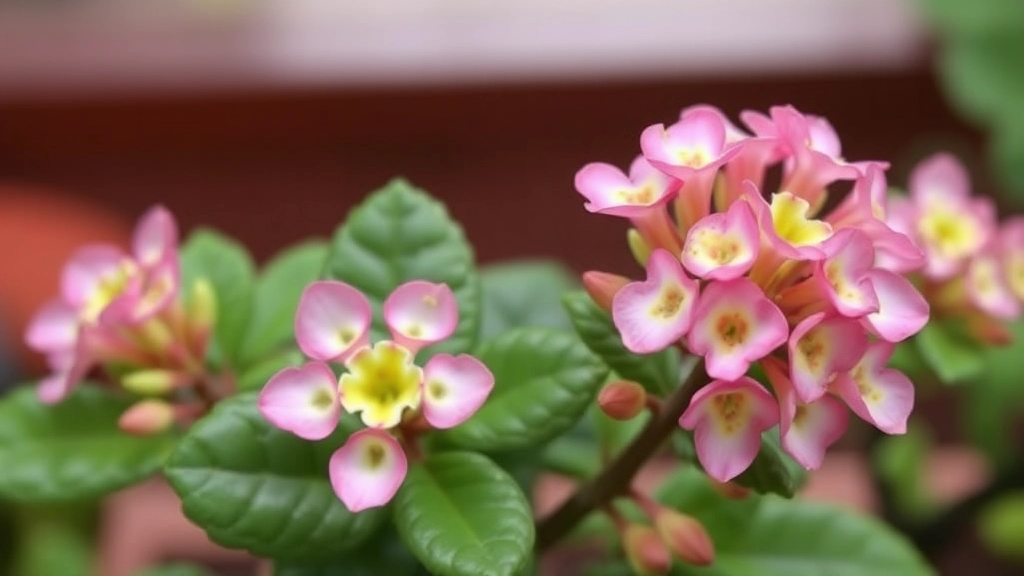Kalanchoe Daigremontiana: An Overview
Have you ever wondered about the medicinal uses of Kalanchoe Daigremontiana, commonly known as “Mother of Thousands” or “Aranto”? This fascinating plant has a rich history in traditional medicine, offering potential benefits for treating inflammation, wounds, and infections. Some even explore its use as a complementary treatment for cancer. Let’s dive into how you can use Kalanchoe both internally and externally while being mindful of its side effects.
Topical Uses
Topically, Kalanchoe Daigremontiana can be applied to the skin to aid in healing and reduce inflammation.
Internal Uses
Internally, people often consume it through infusions or by eating the leaves raw. However, it’s crucial to be aware of its toxicity, especially in large doses, and to consider contraindications for certain groups like pregnant women or individuals with heart conditions.
Safety Considerations
By understanding these factors, you can safely explore the medicinal potential of this remarkable plant.
Medicinal Properties of Kalanchoe Daigremontiana
Have you ever wondered about the healing potential of the plants around you?
Kalanchoe Daigremontiana, commonly known as “Mother of Thousands,” is gaining attention for its remarkable medicinal properties.
This succulent is not just an ornamental plant; it boasts a variety of health benefits that have been recognised in traditional medicine.
Key Medicinal Properties
- Anti-inflammatory Effects: Kalanchoe has compounds that can reduce inflammation, making it useful for treating conditions like arthritis and skin irritations.
- Antimicrobial Activity: The plant exhibits antibacterial and antifungal properties, which can help in preventing infections.
- Wound Healing: Its leaves are often used topically to promote faster healing of cuts and abrasions.
- Rich in Nutrients: Kalanchoe is packed with vitamins and minerals, including vitamin C and flavonoids, which contribute to overall health.
- Potential Antioxidant Effects: The presence of antioxidants may help combat oxidative stress, supporting cellular health.
For more detailed information on how to care for and propagate this amazing plant, check out our complete care and propagation guide for Mother of Thousands. Additionally, explore the step-by-step propagation tips for Kalanchoe Daigremontiana to ensure your plant thrives.
Topical Uses: Skin Healing and Inflammation Relief

Have you ever found yourself battling pesky skin issues or annoying inflammation?
Kalanchoe Daigremontiana might just be your new best friend.
This plant isn’t just a pretty face; it’s packed with medicinal properties that can help with skin healing and provide relief from inflammation.
Skin Healing Benefits
Kalanchoe is known for its ability to soothe and heal cuts, burns, and other skin irritations.
Here’s why it’s worth considering:
- Anti-inflammatory Properties: The compounds in Kalanchoe help reduce swelling and redness.
- Antibacterial Effects: It can fight off bacteria, which is great for preventing infections in wounds.
- Promotes Healing: Regular application can speed up the healing process of minor injuries.
How to Use It Topically
Using Kalanchoe on your skin is super simple.
Here’s how you can make the most out of it:
- Fresh Leaf Application: Just take a leaf, crush it, and apply the juice directly to the affected area.
- Homemade Ointment: Blend Kalanchoe leaves with a carrier oil like coconut oil for a healing salve.
- Compress: Soak a cloth in Kalanchoe juice and place it on inflamed areas for quick relief.
Real-Life Example
I remember a time when I had a nasty burn from cooking.
I applied some fresh Kalanchoe juice, and within days, the redness faded, and the pain eased.
It’s like having a natural first-aid kit right at home!
Caution
While Kalanchoe is generally safe for topical use, always do a patch test first.
Some people may have sensitivities.
Internal Uses: Infusions and Leaf Consumption
When considering the internal uses of Kalanchoe Daigremontiana, many people often wonder about the best ways to harness its medicinal properties.
Infusions
One effective method is preparing infusions.
- How to Make an Infusion:
- Take a few fresh leaves of Kalanchoe Daigremontiana.
- Chop them finely and steep them in hot water for about 10-15 minutes.
- Strain the mixture and enjoy it warm or chilled.
Infusions can be a soothing way to consume the plant, allowing you to benefit from its potential anti-inflammatory and immune-boosting properties.
Leaf Consumption
Another approach is direct leaf consumption.
- How to Use the Leaves:
- Fresh leaves can be chewed or added to smoothies.
- Dried leaves can be ground into powder and incorporated into food.
Both methods are simple and effective for integrating Kalanchoe Daigremontiana into your diet.
Considerations
While these internal uses may offer health benefits, it’s essential to be mindful of dosage and frequency.
- Recommended Dosage:
- Start with small amounts to gauge your body’s response.
- Gradually increase if no adverse effects are noticed.
With its potential health benefits, Kalanchoe Daigremontiana can be a valuable addition to your wellness routine. For more detailed information on how to use Kalanchoe Pinnata for health benefits, you can visit our guide on Kalanchoe Pinnata. Additionally, if you’re interested in the overall care of Kalanchoe plants, check out our Mother of Thousands care guide.
Potential Anti-cancer Benefits of Kalanchoe

As we explore the medicinal properties of Kalanchoe Daigremontiana, one of the most compelling areas of interest is its potential anti-cancer benefits.
Many individuals are searching for natural ways to support their health, particularly when it comes to serious conditions like cancer.
Promising Compounds
Kalanchoe Daigremontiana is rich in flavonoids, alkaloids, and other bioactive compounds that have garnered attention for their potential anti-cancer properties.
- Flavonoids: These compounds are known for their antioxidant effects, which can help combat oxidative stress in cells.
- Alkaloids: Some studies suggest that alkaloids may inhibit the growth of cancer cells, although more research is needed.
Research Insights
While the research is still in its early stages, there are promising findings regarding Kalanchoe’s impact on various types of cancer.
- Some laboratory studies have indicated that extracts from Kalanchoe may induce apoptosis, or programmed cell death, in cancer cells.
- Other studies suggest that Kalanchoe can enhance the effects of conventional cancer treatments, potentially making them more effective.
Anecdotal Evidence
Many individuals have shared personal stories of incorporating Kalanchoe into their health regimens during cancer treatment.
- Some report improved energy levels and a sense of well-being, although these experiences are subjective and vary widely.
Caution and Consideration
While the potential anti-cancer benefits of Kalanchoe are intriguing, it is essential to approach this herb with caution.
- Always consult a healthcare professional before adding Kalanchoe to your treatment plan, especially if you are undergoing conventional cancer therapies.
Side Effects and Toxicity: What to Watch For
As we explore the potential benefits of Kalanchoe Daigremontiana, it’s crucial to address the side effects and toxicity that may accompany its use.
Many people are drawn to this plant for its medicinal properties, but it’s essential to be aware of the possible downsides.
Common Side Effects
- Gastrointestinal Issues: Some users report nausea, vomiting, or diarrhoea after consuming Kalanchoe.
- Skin Reactions: When applied topically, it may cause irritation or allergic reactions in sensitive individuals.
- Fatigue and Dizziness: High doses can lead to feelings of tiredness or lightheadedness.
Toxicity Concerns
Kalanchoe Daigremontiana contains compounds that can be toxic in large amounts.
- Cardiotoxicity: There are concerns about its effects on the heart, particularly for those with existing heart conditions.
- Kidney Damage: Prolonged use may affect kidney function, especially in vulnerable populations.
What to Watch For
- Unusual Symptoms: If you experience any adverse effects, discontinue use immediately.
- Consult Healthcare Professionals: Always speak with a healthcare provider before adding Kalanchoe to your routine, especially if you are on medication or have underlying health issues.
For a detailed guide on how to safely care for this plant, check out our Mother of Thousands care guide. Additionally, if you are interested in learning about the medicinal benefits and uses of Kalanchoe Pinnata, visit our comprehensive guide.
Contraindications: Who Should Avoid Kalanchoe

So, you’re intrigued by Kalanchoe Daigremontiana and its potential benefits?
Before diving in, it’s crucial to know who should steer clear of this plant.
- Pregnant and Nursing Women
If you’re pregnant or breastfeeding, it’s best to avoid Kalanchoe. This plant can affect the uterus and may not be safe for you or your baby. - Individuals with Kidney Issues
Got kidney problems? Kalanchoe can increase the risk of complications. It’s a good idea to consult your doctor before using it. - People on Blood Pressure Medication
If you’re on medication for high blood pressure, tread carefully. Kalanchoe can lower blood pressure further, leading to dizziness or fainting. - Those with Allergies
If you’re allergic to plants in the Crassulaceae family, you should skip Kalanchoe. Allergic reactions can range from mild to severe. - Anyone with Gastrointestinal Disorders
If you have a history of stomach issues, be cautious. Kalanchoe might irritate your digestive tract, leading to discomfort. - Children
Kalanchoe isn’t recommended for young ones. Their bodies are still developing and may not handle the compounds in this plant as well as adults.
To wrap it up, always consult a healthcare professional before trying Kalanchoe, especially if you fall into any of these categories.
Tips for Safe Consumption and Dosage
As we delve deeper into the practicalities of using Kalanchoe Daigremontiana, it’s essential to ensure safe consumption and appropriate dosage. Many individuals are eager to explore its benefits but may have concerns about how to do so safely.
Here are some key tips to consider:
- Start Small: If you’re new to Kalanchoe, begin with a small amount. This allows you to gauge your body’s reaction without overwhelming it.
- Consult a Professional: Before incorporating Kalanchoe into your routine, especially if you have underlying health conditions or are pregnant, consult a healthcare provider. This can help prevent potential interactions with medications or complications.
- Preparation Matters: When making infusions, ensure you use clean, fresh leaves. Steep them in hot water for about 10-15 minutes to extract beneficial compounds effectively.
- Monitor Your Body: Pay attention to how your body responds after consumption. If you experience any adverse effects, discontinue use and seek medical advice.
- Limit Frequency: To avoid potential toxicity, consider using Kalanchoe in moderation. For instance, consuming it a few times a week rather than daily can be a safer approach.
- Avoid Excessive Dosage: Stick to recommended dosages. Overconsumption can lead to unwanted side effects, so it’s crucial to adhere to guidelines.
- Storage: Store Kalanchoe leaves in a cool, dry place to maintain their potency and prevent spoilage.
By following these tips, you can enjoy the benefits of Kalanchoe Daigremontiana while minimising risks. For more detailed insights, you might find our toxicity and safety tips for Kalanchoe Pink Butterflies helpful. Additionally, understanding the medicinal uses and health benefits of Kalanchoe Brasiliensis can provide broader knowledge on the genus.
FAQs about Kalanchoe Daigremontiana and Its Medicinal Uses
What are the topical uses of Kalanchoe Daigremontiana?
Kalanchoe Daigremontiana is known for its skin healing and inflammation relief properties. It can soothe and heal cuts, burns, and other skin irritations due to its anti-inflammatory and antibacterial effects.
How do I use Kalanchoe Daigremontiana for skin healing?
You can use it in several ways: apply fresh leaf juice directly to the affected area, create a homemade ointment by blending leaves with a carrier oil like coconut oil, or use a compress soaked in Kalanchoe juice.
Does Kalanchoe Daigremontiana have anti-cancer benefits?
Some studies suggest that Kalanchoe Daigremontiana contains flavonoids and alkaloids that may have potential anti-cancer properties. These compounds can combat oxidative stress and may inhibit cancer cell growth, though more research is needed.
Is there any research supporting the anti-cancer benefits of Kalanchoe Daigremontiana?
While research is in its early stages, some laboratory studies have shown that Kalanchoe extracts may induce apoptosis in cancer cells and enhance the effectiveness of conventional cancer treatments.
Who should avoid using Kalanchoe Daigremontiana?
Pregnant and nursing women, individuals with kidney issues, people on blood pressure medication, those with allergies to the Crassulaceae family, individuals with gastrointestinal disorders, and children are advised to avoid using Kalanchoe Daigremontiana.
Can I use Kalanchoe Daigremontiana if I have allergies?
If you are allergic to plants in the Crassulaceae family, you should avoid using Kalanchoe Daigremontiana as it can cause allergic reactions ranging from mild to severe.
Should I consult a healthcare professional before using Kalanchoe Daigremontiana?
Yes, it is always advisable to consult a healthcare professional before using Kalanchoe Daigremontiana, especially if you fall into any of the contraindicated categories or are undergoing conventional medical treatments.
References
-
Medicinal properties of Kalanchoe species: A review
-
Phytochemical and Pharmacological Properties of Kalanchoe Pinnata
-
Kalanchoe: A review on its traditional uses, phytochemistry, and pharmacology
